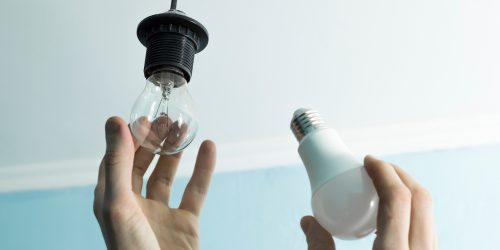How to identify and reduce standby power consumption in your company?
Energy consumption is a major concern for all companies, not only to reduce costs but also to minimise their environmental footprint. One often overlooked aspect of this consumption is appliances on standby. Also called “power-saving mode”, standby mode is a feature that enables a device to consume less energy when not in use. Although energy consumption is reduced, it never stops completely. This means that even when closed at night or on weekends, companies continue to use energy. To make big savings, they must tackle this issue head-on.

What is standby power consumption?
Sometimes called “phantom consumption”, standby power consumption refers to the energy used by electrical appliances when switched off or left on standby. This may seem surprising, but even when a piece of equipment is switched off, as long as it remains plugged in, it continues to consume electricity, causing energy waste.
However, not all machines consume the same amount of electricity on standby. Computers, printers and even some types of lights are the most energy-hungry. These appliances can consume a significant amount of electricity even when not in use.
In addition, some pieces of equipment do more than just consume electricity when on standby. They also generate heat which can increase the need for ventilation and air conditioning in the room where they are located, thus adding an extra cost to the electricity bill.
Given this observation, manufacturers have designed new, more eco-friendly models that consume less than their previous versions.
How to measure the standby power consumption of an appliance?
The first step in managing a company’s energy consumption is to identify which appliances continue to consume energy even when not in use and to determine the power consumption.
The standby power consumption of an appliance can be determined using a wattmeter, an instrument that measures electrical power in watts. This device is easy to use: Simply plug it into a wall outlet, then plug the appliance you want to measure into the wattmeter. This allows you to see in real-time how much energy the appliance in question consumes when on standby.
To calculate the daily standby power consumption of an appliance, multiply the figure measured with the wattmeter by the number of hours per day that it is on standby. To know the annual consumption, multiply the result by the number of days in the year.
Lastly, to determine the annual cost of their standby power consumption, companies must multiply their annual consumption in kilowatt hours (kWh) by the national average cost per kWh. By measuring the exact consumption of appliances on standby, organisations will be able to establish a concrete energy and cost savings plan. This approach contributes not only to making them more energy efficient but also to preserving the environment.
How to reduce the consumption of appliances on standby?
There are several effective strategies to significantly reduce the power consumption of appliances on standby and generate savings.
Use multi-sockets with switches
A simple step like turning off one multi-socket can avoid the standby power consumption of several appliances at once. This is particularly useful in offices where multiple machines are grouped. In this way, no equipment will be forgotten.
Unplug devices at night
It is almost impossible to have no device on standby in a work environment, but it is essential to understand which appliances have the most impact on energy consumption to know which ones to unplug.
To avoid any “phantom” power consumption, computers, printers, scanners and all office equipment should be turned off at the end of the workday and, if possible, unplugged completely. Laptop chargers, which can also be unplugged once the battery is fully charged, should not be forgotten.
When companies have a kitchen, appliances like microwaves, coffee machines and kettles can continue to consume electricity even on standby. It is therefore essential to unplug these appliances when the day is over to save energy and reduce bills.
Television screens and presentation systems in meeting rooms also consume electricity on standby. When not in use, they must therefore be unplugged.
Raise employee awareness
Increased awareness among teams can significantly reduce company power consumption. To achieve this, workshops or training sessions can be organised to show employees how to save energy and the resulting benefits.
Similarly, the company can implement an equipment shutdown policy whereby all electronic devices must be completely switched off or even unplugged at the end of the working day. Creating a routine among employees ensures that this task will not be forgotten.
Lastly, chargers for electronic devices consume energy even when not in use. It is therefore essential to remind teams that unplugging their phone chargers can help reduce their company’s standby power consumption.
Choose eco-friendly appliances
When purchasing new equipment, opt for eco-friendly products designed to save energy. These sustainable appliances consume less on standby, which can lead to significant long-term savings for companies.
By combining these strategies, energy sobriety in companies can be achieved and they can promote their eco-friendly commitment. It is also crucial to regularly audit energy consumption to ensure efforts are effective.
Is standby power consumption significant?
The standby power consumption of a single appliance may seem insignificant. However, when the whole organisation is taken into account, it can have serious consequences, not only on that company’s budget but also on its carbon footprint. Any electricity consumption implies a certain amount of greenhouse gas released into the atmosphere due to the production of energy from fossil sources.
This means that by reducing the power consumption of appliances on standby, companies save on their energy bill all the while reducing their impact on the environment. Thus, the effort to minimise standby power consumption has a twofold benefit: Economic and environmental.
It is therefore essential for companies to become aware of this hidden power consumption and to implement the necessary measures to reduce it.
Download our “Corporate Social Responsibility” white paper.






